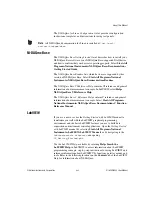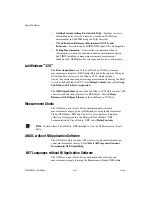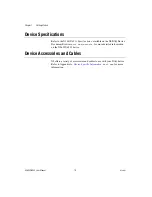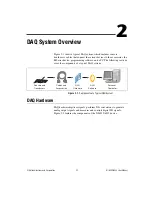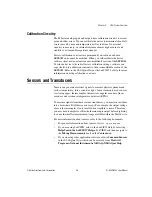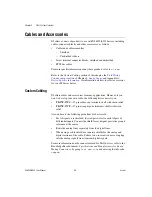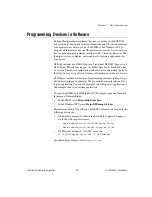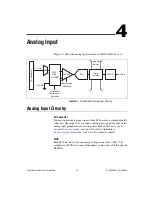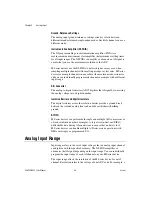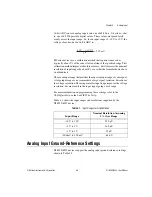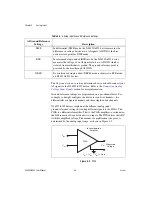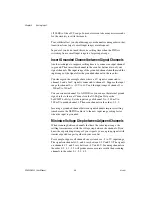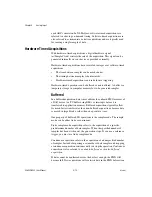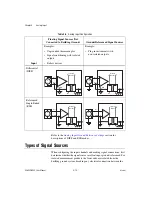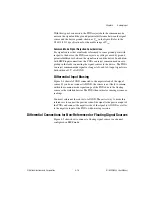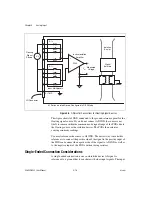
Chapter 4
Analog Input
4-2
ni.com
Ground-Reference Settings
The analog input ground-reference settings circuitry selects between
differential and referenced single-ended modes. Each AI channel can use a
different mode.
Instrumentation Amplifier (NI-PGIA)
The NI programmable gain instrumentation amplifier (PGIA) is a
measurement and instrument class amplifier that minimizes settling times
for all input ranges. The NI-PGIA can amplify or attenuate an AI signal to
ensure that you use the maximum resolution of the ADC.
M Series devices use the NI-PGIA to deliver high accuracy even when
sampling multiple channels with small input ranges at fast rates. M Series
devices can sample channels in any order at the maximum conversion rate,
and you can individually program each channel in a sample with a different
input range.
A/D Converter
The analog-to-digital converter (ADC) digitizes the AI signal by converting
the analog voltage into a digital number.
Isolation Barrier and Digital Isolators
The digital isolators across the isolation barrier provide a ground break
between the isolated analog front end and the earth/chassis/building
ground.
AI FIFO
M Series devices can perform both single and multiple A/D conversions of
a fixed or infinite number of samples. A large first-in-first-out (FIFO)
buffer holds data during AI acquisitions to ensure that no data is lost.
M Series devices can handle multiple A/D conversion operations with
DMA, interrupts, or programmed I/O.
Analog Input Range
Input range refers to the set of input voltages that an analog input channel
can digitize with the specified accuracy. The NI-PGIA amplifies or
attenuates the AI signal depending on the input range. You can individually
program the input range of each AI channel on your M Series device.
The input range affects the resolution of the M Series device for an AI
channel. Resolution refers to the voltage of one ADC code. For example, a

